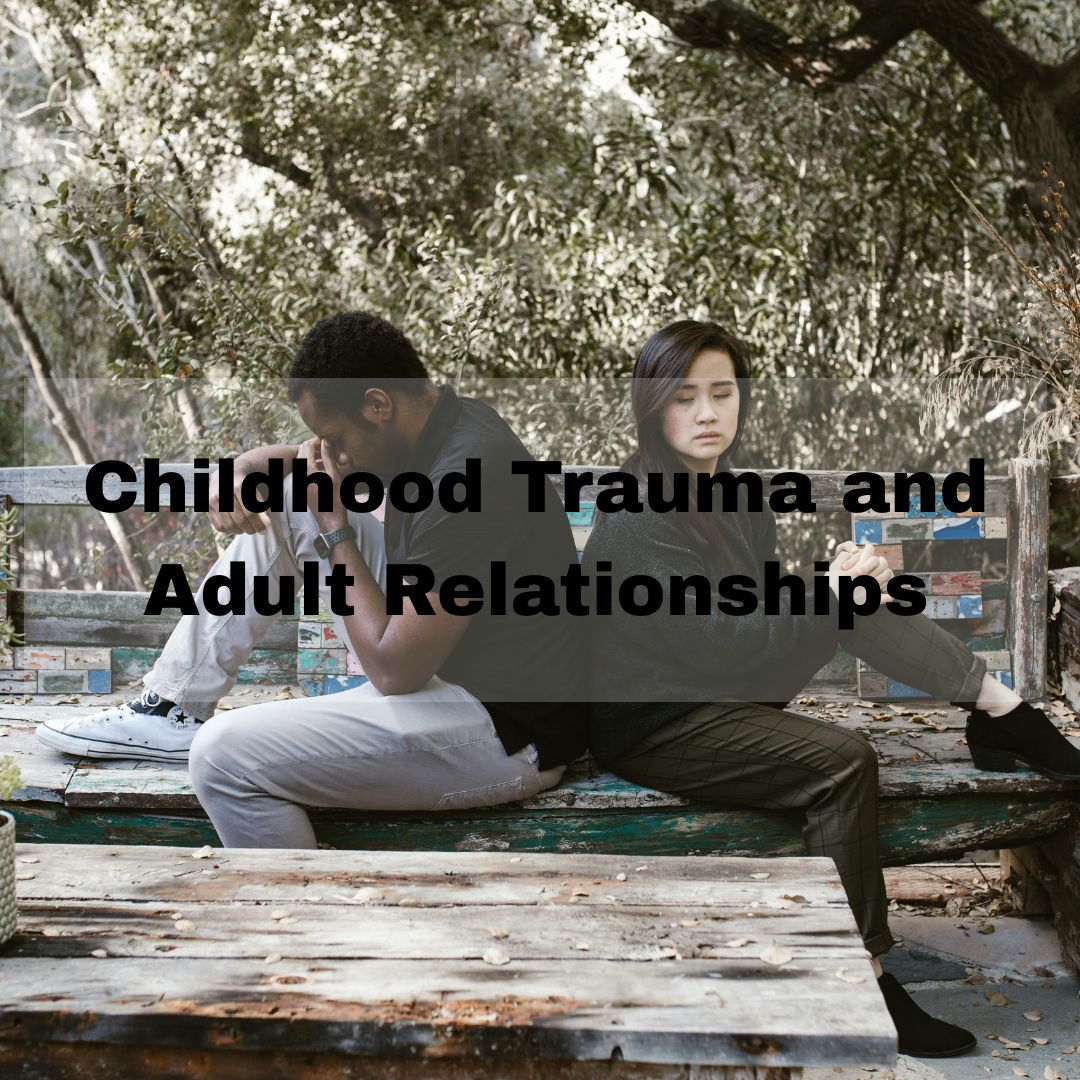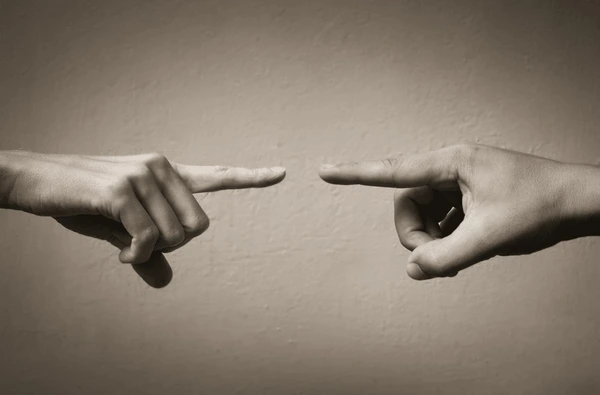How Childhood Trauma and Adult Relationships Interconnect

Childhood trauma and adult relationships are deeply interconnected.
Dr Gabor Maté emphasises that childhood trauma is not merely the distressing events we experience, but the unhealed wounds they leave behind, profoundly shaping our adult relationships. These unresolved wounds deeply influence how we connect in adult relationships. When a child’s fundamental needs for secure attachment—love, safety, and connection—clash with their need for authenticity (expressing true emotions and personal boundaries), the child often suppresses their genuine self to maintain parental bonds.
This early coping mechanism may help them survive childhood, but it forms a blueprint that shapes future intimacy. As adults, we may unconsciously be drawn to partners who mirror our caregivers’ patterns—even when those patterns were dysfunctional or emotionally unavailable. We might believe that love must be earned through self-sacrifice, or that emotional conflict precedes connection, leading us to trauma-informed relationship patterns where we unconsciously try to “fix” the past by recreating it in the present.
Many adults struggle with connection due to unresolved childhood trauma and adult relationships shaped by it.
Maté explains this is how many people become trapped in cycles of emotional neglect or repetition of familiar pain, unaware that their adult romantic struggles may stem from unresolved childhood wounds.
What is Trauma?
Renowned Physician and Addiction Expert Dr Gabor Maté with over 4 decades of clinical experience says:
“Trauma is a wound that’s not healed. A wound can present in 2 ways: An open wound – it is raw, it hurts when it’s touched or prodded, knocked or triggered in the case of trauma…
A scar – it is numb, there is hardened tissue, loss of feeling & sensation.
Trauma is not what happens TO US, it’s what happens INSIDE US.”
“You do not attract what you want, you attract who you are”
How Trauma Affects Your Lovelife
(10 Min Video)
Dr. Gabor Mate talks about trauma and love in this video. We learn about his opinions about the medical field, including the gap between the modern medical profession’s understanding of the mind and body, its lack of training in the treatment of trauma, and its lack of attention to the patient’s emotional well-being. Also, they talk about diseases, how they relate to beliefs, and sacred agony.
Understanding Trauma Bonding in Romantic Relationships

Trauma bonding refers to a destructive emotional attachment that forms through intermittent reinforcement. In relationships where abuse is followed by affection, often through love bombing (sudden, intense displays of attention or affection), a biochemical addiction forms. This cycle—abuse, apology, affection—releases cortisol during stress, and dopamine during reconciliation, creating a high-low dynamic that keeps people stuck in toxic relationships.
Many individuals mistake this cycle for passion or “intensity,” when in reality it is a symptom of trauma. This pattern is rooted in childhood experiences of inconsistent care, where the brain learned to associate unpredictability with connection. Victims of trauma bonding often become isolated from support systems and justify their partner’s behaviour, while struggling with guilt, fear, and confusion.
Dr Maté explains that trauma bonding is often not about love at all—it is about the familiarity of dysfunction. It’s a trauma-informed dynamic where the nervous system believes it is safest in chaos. Breaking free means recognising the physiological addiction to trauma, developing emotional awareness, and learning to differentiate true intimacy from trauma patterns.
Classic “Love Bombing”

Anxious Attachment & Trauma Bonding
Individuals with an anxious attachment style often experienced inconsistent caregiving in childhood; leaving them hypervigilant to abandonment and intensely craving reassurance. When they form relationships with avoidant partners (who may mirror a distant or emotionally unavailable parent), a toxic cycle can emerge. Anxious partners may tolerate neglect, manipulation or even abuse while desperately seeking crumbs of affection; mistaking intermittent validation for love. This dynamic fuels trauma bonding: the brain becomes biochemically addicted to the “high” of brief connection after periods of distress, much like a child clinging to a parent who swings between warmth and rejection. Unconsciously, they replay their childhood script: “If I try harder, I’ll finally earn the secure love I needed.”

Avoidant Attachment & Trauma Bonding
Those with an avoidant attachment style; typically learned in childhood that expressing needs led to rejection or shame. To protect themselves, they prioritise independence, suppress emotions and withdraw during intimacy; mirroring a caregiver who was dismissive, absent, or overwhelmed. Ironically, avoidants often attract anxious partners, whose pursuit triggers their fear of engulfment. In this push-pull dynamic, the avoidant’s intermittent withdrawal and rare moments of vulnerability can create trauma bonding for their anxious partner. Meanwhile, the avoidant may mistake their partner’s anxiety for “neediness”, reinforcing their belief that closeness is unsafe. Unresolved, this recreates their childhood wound: ”I must handle everything alone to be safe.”
Why Opposites Attract – And Hurt

These opposing styles magnetise each other precisely because they feel familiar. The anxious partner seeks the avoidant’s withheld affection; subconsciously trying to “win” the love they never received from a distant parent. The avoidant, subconsciously drawn to the anxious partner’s intensity, replays their role as the emotionally “self-sufficient” child. Yet without awareness, this dynamic becomes a cage: both are trauma bonded not by love, but by the unhealed past. Recognising this pattern is the first step toward breaking free.
Key Takeaways: Breaking Free from Trauma Bonds & Attachment Patterns
(Based on Dr Gabor Maté & Attachment Theory)
1. Your Attachment Style Isn’t Fixed:
→ Anxious or avoidant behaviours stem from childhood strategies to survive unmet needs. Recognising them is the first step toward secure relating.
2. Opposites Attract – But Often Re-Traumatise:
→ Anxious-avoidant pairings feel intensely “familiar” because they replay old parent-child dynamics. This magnetism is trauma speaking, not true compatibility.
3. Trauma Bonding Is Biochemical:
→ Cycles of pain → fleeting closeness → hope activate addiction pathways. What feels like “passion” may actually be cortisol + dopamine hijacking your nervous system.
4. Healing Starts with Self-Awareness:
→ You can’t “fix” a partner who mirrors your wounded past. But you can break the cycle by tending to your inner child’s unmet needs first.
> The goal isn’t to find someone ‘perfect’ – it’s to relate from wholeness, not hunger.”

Bec D Transformation
Empowering your journey from awareness to change, Transformation & Wholeness
Trauma & the “Soma”
So this is what we do in clinic is Somatic Healing and in our Breathwork Group – we release the stored trauma from the body!
When each individual of a couple heal their individual trauma, they discover their true Authentic Selves and can show up in their relationship in a healthier and happier, more ‘WHOLE’ way.
They understand and become aware of their attachment style and can monitor themselves more clearly and powerfully when they slip back into their Attachment pattern.
Education = Power
Education is the empowerment to ALL healing of Trauma
Dr Gabor Mate – Wounds – People Become Detached from their Feelings
1 Min
“Trauma presents either as an open wound or a scar that is thick and there is no feeling. People who are traumatically scarred from feelings during age 1–7 tend to be disconnected from their feelings. They tend to be stuck in emotional states that characterised their development when they were traumatised.”
For anyone having difficulty clicking & viewing the video above, click here:
https://youtube.com/shorts/enfSwmoo6ds?si=C9B0aLiWxg5xVAbD
Dr Gabor Maté – Explains What Childhood Trauma Means (1 Min)
Trauma is not just terrible things happening:
In this short video, world renowned Trauma & Addiction Expert Dr Gabor Maté explains that children can be traumatised, not just by terrible things happening to them; but just by not having their needs met; also by not being seen, not being heard; not being held; THIS is wounding for a child, which is what the meaning of the word trauma means. Any child, especially the sensitive child can be wounded by parents that are stressed & unavailable emotionally to really see them for who they are…
For anyone having difficulty clicking & viewing the video above, click here:
Dr Gabor Mate -Trauma Creates Coping Mechanisms
1.5 Min
Many behaviours we label as “personality traits” are actually survival responses to trauma. Dr. Gabor Maté explains how childhood trauma leads to coping patterns like people-pleasing, overworking, emotional suppression and lack of boundaries. When a child receives the message that they’re not enough, they often grow into adults constantly proving their worth – by being overly nice, avoiding conflict, or pushing themselves to exhaustion. These patterns aren’t flaws; they are protective responses developed early in life. Over time, they can affect the nervous system, immune response, and overall well-being. Unresolved trauma can manifest physically, emotionally and mentally; it’s not random. This understanding helps shift blame from the self to the source and opens the path to deeper awareness and transformation.
For anyone having difficulty clicking & viewing the video above, click here:
https://www.youtube.com/watch?v=ah6OQ5oae5c
Why can’t the Medical System CURE Anything?
Dr. Gabor Mate reveals why the Medical Profession is working “Blind” when it comes to Chronic Disease
(1 Min Video)
For anyone having difficulty clicking & viewing the video above, click here:
https://youtube.com/shorts/7y6l5LlFAl8?si=vFf_3BbLwXKcMOs8
Recognising the ways childhood trauma affects adult relationships is a crucial step toward building trauma-informed connections. By understanding patterns like trauma bonding, love bombing, and coping mechanisms born from emotional neglect, we begin to reclaim agency over our relationships and our wellbeing.
If you’re working through relationship patterns that no longer serve you, or seeking to understand why certain emotional dynamics keep repeating, know that transformation is possible—especially when we begin to release stored trauma through somatic work, self-awareness, and professional support.

